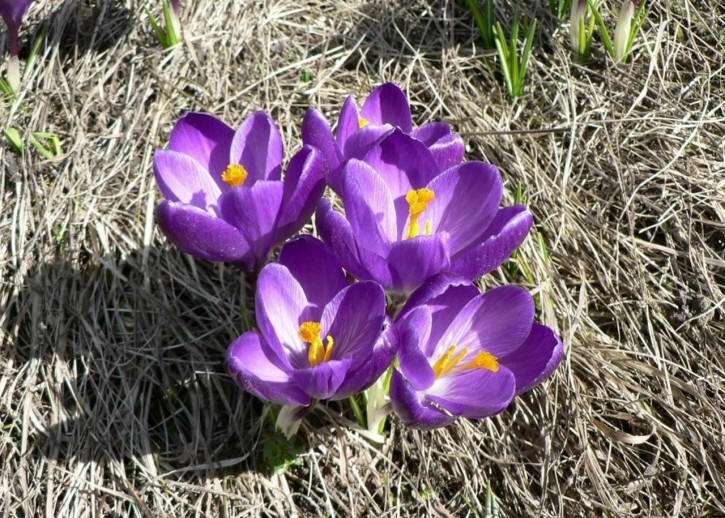|
March Gardening Tips
Barb Mrgich
Adams County Master Gardener in Training
 I like to start my new gardening season in March. Even if you cleaned up your garden in the fall, there will still be plenty to do. The weather in March is not always the most inviting, but
if you pay attention, there will be enough good days to get out there. Just remember one thing. Never walk on your garden when it is wet because it compacts the soil (destroys the air spaces necessary for plant health.) Most
of the jobs I am recommending can be done from outside the garden bed or from the pathways. I like to start my new gardening season in March. Even if you cleaned up your garden in the fall, there will still be plenty to do. The weather in March is not always the most inviting, but
if you pay attention, there will be enough good days to get out there. Just remember one thing. Never walk on your garden when it is wet because it compacts the soil (destroys the air spaces necessary for plant health.) Most
of the jobs I am recommending can be done from outside the garden bed or from the pathways.
Clean up Leaves and Cut down Grasses. I start by cleaning up all the leaves I can. They blow in all winter from other people's yards, and get caught in the old perennials and shrubs in my gardens. Leaves in the garden over the winter do help protect the plant crowns and prevent heaving, but left on too long, large wet leaves can smother
small plants. Plus, they look ugly!
I rake the leaves out onto the grass and then run over them with our mulching mower. I use my flexible Yard Butler rake which will pull leaves out of ground covers without yanking them out as other rakes will do. Once the leaves are mulched, they can go back on the garden, in the compost, or stay on the lawn. If you spread them thin, they
are good for the grass.
To cut the big grasses, I tie a rope or bungee cord around them, then cut them as close to the ground as possible with the electric hedge clippers. If you see the middle of the grass clump is starting to doe out, it is time to dig it up and divide it. Do it now before it starts to grow.
Check Trees. Before the leaves come on the trees, it is a good time to check them for dead, broken or rubbing branches. Depending on the type of tree, the best time for major pruning may vary, but you can always snip a few dead, diseased, or misplaced branches. Also, cut off suckers that grow straight up from the roots of some trees. These
weaken the tree and detract from its appearance.
Prune Back Shrubs That Flower on New Wood. The shrubs in my yard that fall under this heading are my Little Princess spirea, abelia, Annabelle hydrangea, butterfly bush, beautyberry, knock-out roses, Jackmani Clematis, and Russian sage. As a general rule, cut them back to about one foot.
Cut Back All Perennials. Wait until the middle of the month to do this because the old dead stems and debris protect the crowns from the cold.
Edge. Now is a great time to edge the beds when the ground is soft. It's easy to dig, and the grass comes out easily. Cut a straight edge, and throw all the soil and discarded grass in the compost. At the same time, look for perennial weeds and pull them out as you go along. I use my long handled digger to remove the wild onion. You have
to get the bulb or it will be back bigger than ever. And never throw it in the compost!!
Fertilize. I use an organic fertilizer such as Hollytone or Gardentone. The Hollytone is for the acid loving plants such as the evergreens, azaleas, rhodies, and holly. It tells you right on the bag. To distribute it, I use a plastic flower pot with a lot of holes in the bottom (think poinsettia). I set the flower pot on an old cookie
sheet and fill it with fertilizer. When I lift the flower pot the fertilizer comes out the holes. When I want it to stop, I set it back on the cookie sheet. Be sure to keep the fertilizer under the plant, not on the plant. After I spread it, I take my garden wizard and break up the mulch, working the fertilizer down in.
About the time I finish all this, the bulbs are starting to bloom, the grass is green, and suddenly the yard looks great!

Read other articles on plants and gardens
Read other spring related gardening articles
Read other articles by Barbara Mrgich
|